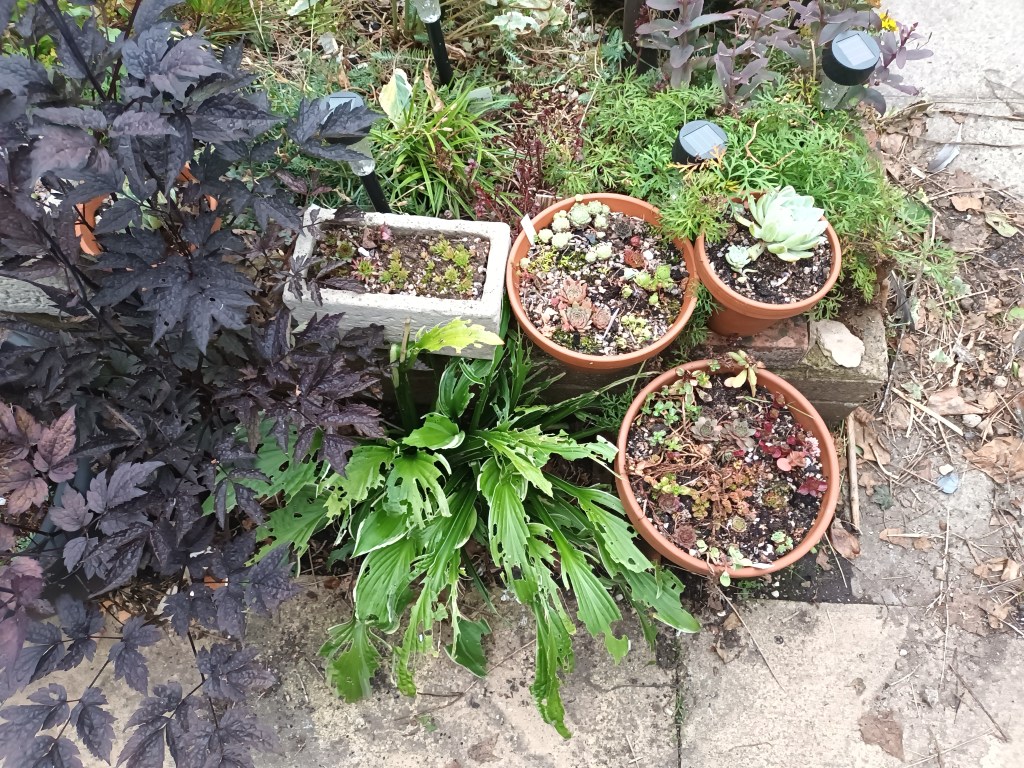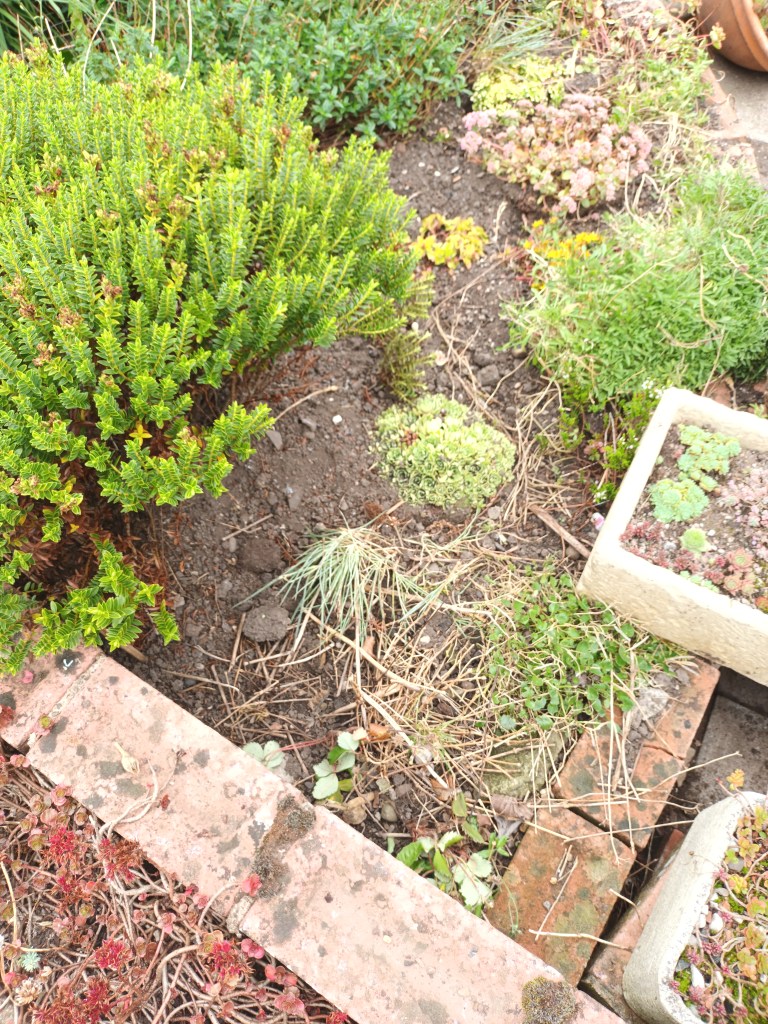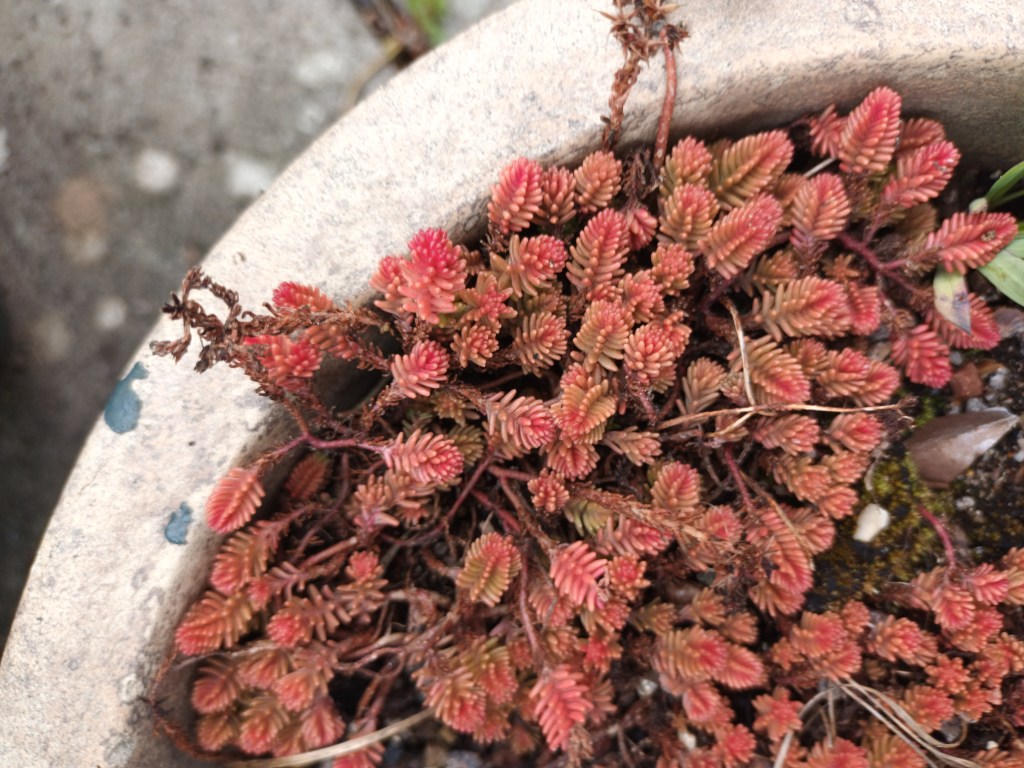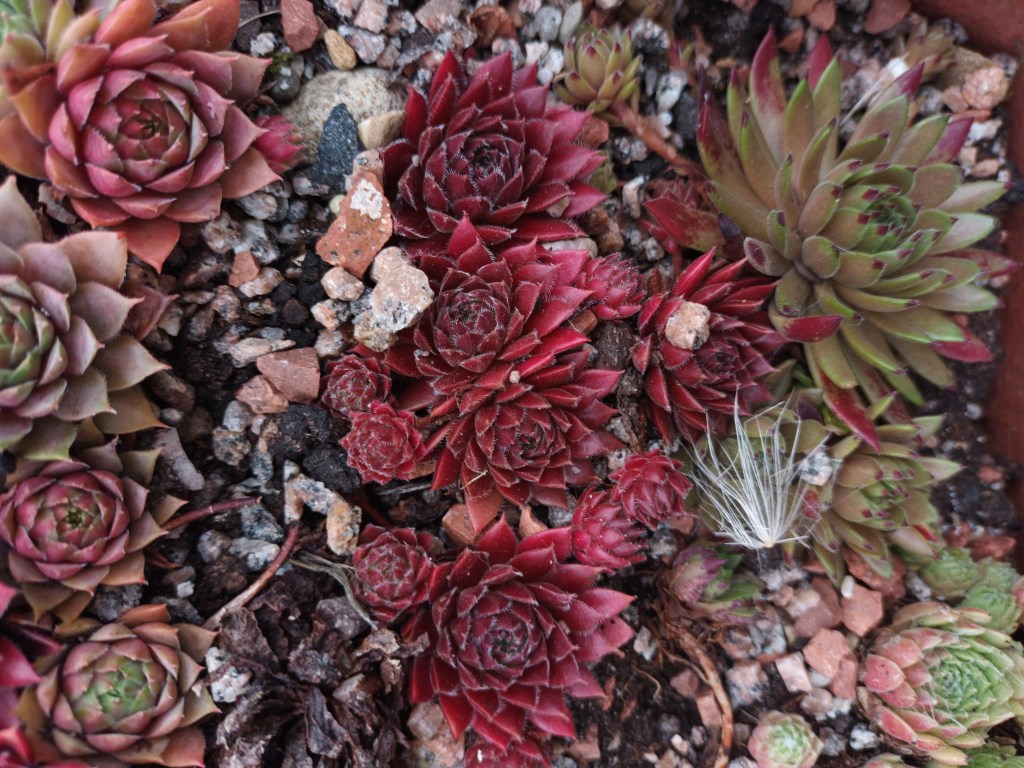Hello and welcome to this week’s six on Saturday.
The weather has been pretty uneventful this week on the North Sea coast. We have had a couple of warmish sunny days but we have had lots of cloud. Thankfully ir hasn’t rained another so there has been plenty of opportunities to work in the garden. This week’s jobs has included servicing my cold frames and mining greenhouses. This has included re arranging then so they get more sun and ordering new perspex for one of the greenhouses, thanks to a cat sitting on one edge them last year. Normally you wouldn’t expect a cat to break the perspex but this mini greenhouse was shall we say not the best quality and may as well been covered with cling film.
1. Actae Simplex Brunette

This plant always delivers year after year. It’s one of those plants that delivers on multiple levels. It has wonderful brown leaves with distinctive veins running through them, small brown flower buds that looks like mini chocolate truffles and distinctive baby pink flowers that attract bumble bees in late summer. I am going to split plant this year and remove the Hosta which has never looked healthy next to it.

2. Wild St John’s Wort

I have a corner in my front garden where I alow wold flowers to grow. The only flowers I have planted there has been borage but luckily I get lots of wild poppies and purple toadflax. I was delighted to see this St John Worts growing in a crack in the paving stones. I have no idea which variety it is because most of the varieties of wild St John Wort look similar.
3. Gap

I had a Dianthus Devon Wizard here but it was starting to look very leggy and it was taking over this corner of the border. I took a few cuttings and they should take but I took the opportunity to move a couple of Sedums from the pots they were growing in and planting them direct into the garden. I have also planted one of my silver Saxifrage here and will interested to see if it grows OK here.
4. Sedum Sexangulare

The end of summer is approaching and this the time of the year when rhe autumn colours start. This sedum is one of the first plants to change. Sedum Sexangulare has usually got green leaves in it’s growing season but this one has brown leaves all Spring and Summer and this means that when it starts to die back the pallette of colours it shows are vibrant and it gives off a neon type sheen and it draws your eye despite it being a small plant.
5. Sempervivums in a row.

Talking about autumn colours this group of Sempervivums were putting on a show this week and I managed to catch them in all their glory. From left to right we have S Grey Ghost, Havedijker Teufell, Devils Touch (top right) and Atlanicum (bottom right)…
6 Ivy Hedge

As we have had a slightly wetter summer than normal this year the Ivy hedge I have to the west of my garden is certainly flourishing this year partly due to a lockdown haircut. I think a heavy cut will be needed in the Autumn.
That’s my six for this week. It looks like The weather this weekend is going to be as they say changeable in the extreme so gardening opportunities might be limited.
Until next week goodbye

Very original sedum sexangulare; it must be fantastic to take a close-up of it.
Actae Simplex must be slow growing, right? In any case, it’s a very elegant and nice flower spike
LikeLiked by 1 person
Yeah the Actae is a bit of a weird 1 TBH. It produces the leaves in late spring then takes forever to produce the flower spikes.
LikeLiked by 1 person
That Number 1 is beautiful. Sedums and sempervivums looking good , as always.
LikeLiked by 1 person
Thanks granny
LikeLiked by 1 person
Your semps are looking good. My reddish ones seem to be turning green now!
LikeLiked by 1 person
Thank you. Some of my red ones are turning green as well
LikeLike
Do you suspect that Saint John’s wort is a naturalized garden variety? Could it be the traditional Hypericum perforatum? One species of Hypericum is aggressively naturalized here. Another shrubbier form is sometime seen surviving in old or abandoned gardens. I just featured it for Tuesday. I have never met Hypericum perforatum.
LikeLiked by 1 person
I don’t know Tony. We do have several species of wild St Johns Wort in Britain. All the garden species have far larger flowers.
LikeLiked by 1 person
Several?! Well, I suppose they must come from somewhere.
LikeLiked by 1 person
The Actaea simplex is a wonderful plant. Very showy.
LikeLike
Yes it certainly has a bit of a peacock complex
LikeLiked by 1 person
Interesting sedum. My actea is forming flower spikes now. A bit behind yours. Been tempted with another as they do look good in blocks.
LikeLiked by 1 person
Yes there is big groups of them in the gardens at Crowther Castle in Cumbria they are supposed to look spectacular.
LikeLike
My Actaea is quite a bit behind yours, but it’s a plant worth waiting for. The Sedum is a new one to me, very sculptural.
LikeLiked by 1 person